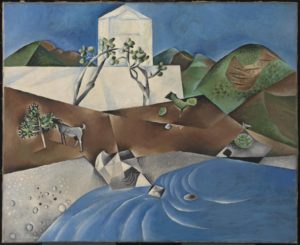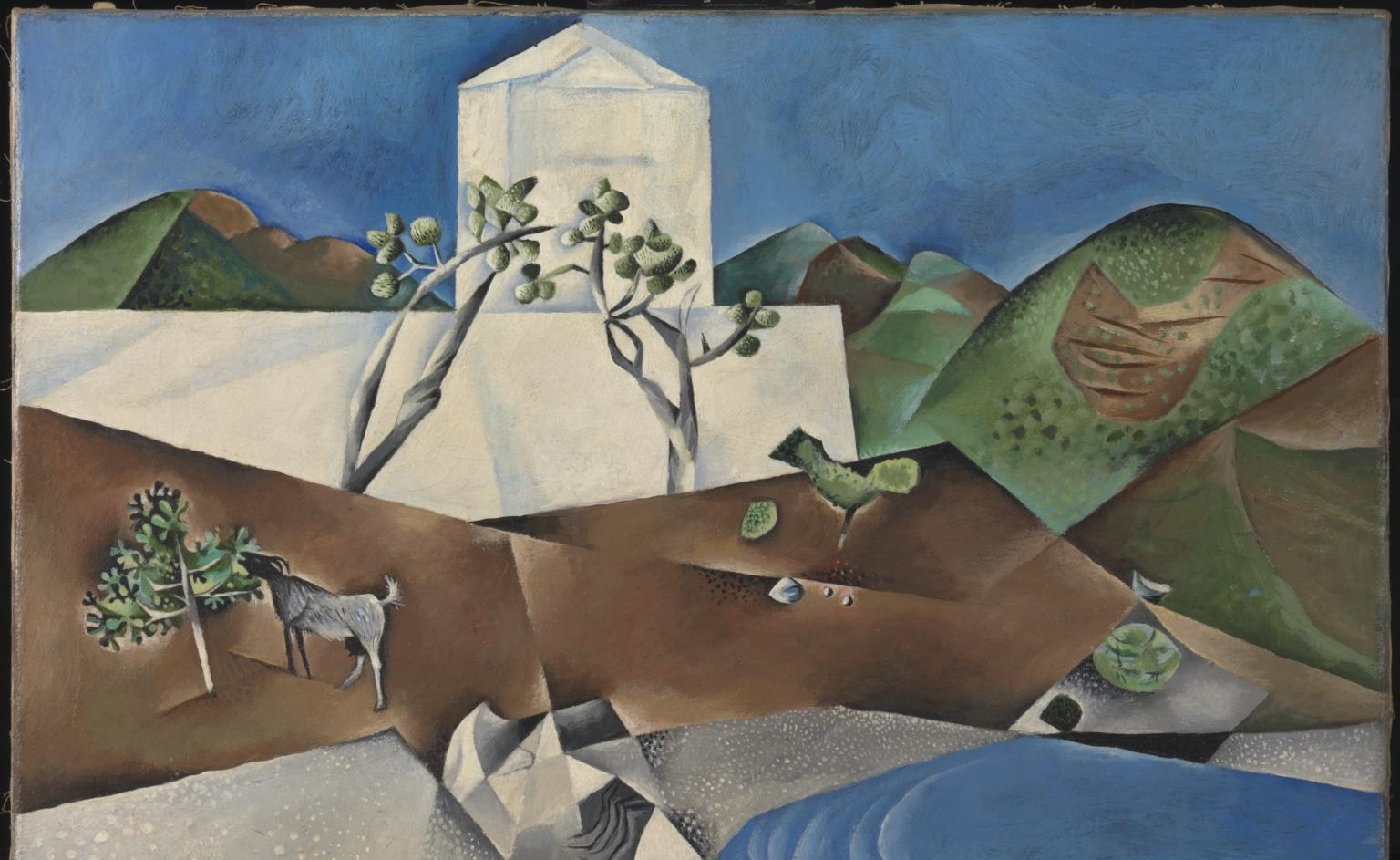22 March 2018
Charmed Lives In Greece
Ghika, Craxton and Leigh Fermor
The British Museum, 8 March – 15 July.
Reviewed by William Morton

This compact exhibition celebrates the friendship of the painters, Niko Ghika (1906-1994) and John Craxton (1922-2009), and the writer, Patrick Leigh Fermor (1915-2011). Ghika was Greek and the other two lived in Greece, which was central to the work of all of them.
I first went to Greece in the early 1960s and it was wonderful. I remain a Hellenophile, although some of the magic has been lost as a result of development, mass tourism and, in particular, the enormous increase in road traffic. Leigh Fermor is quoted as saying that part of the charm of the island of Hydra was that it was ‘as empty of wheels as pre-Columbian America’ and to a lesser extent the same used to apply to much of Greece.
I have also greatly enjoyed Leigh Fermor’s books (jackets by Craxton), both those about Greece itself and those about his pre-War walk across Europe to Istanbul. Enormously well-read, he can be slightly wordy and a bit precious (as in ‘We gathered a small team of stone-cutters and builders and settled in tents, reading Vitruvius and Palladio’) but is very good at his best as when he describes his visit to the monasteries of Mount Athos. He was handsome and clearly attractive to women and aristocrats. He could be accused of loving a lord but in fairness they loved him. In ‘Between the Woods and the Water’ he relates, for example, how, as a penniless boy, he enjoyed the hospitality of one Hungarian landowner after another and was passed on by them to their less fortunate friends and relatives whose estates lay in territory allocated to Romania after the First World War.
The friends seem indeed to have led charmed and convivial lives centred on lovely houses on Hydra and Corfu (Ghika), in Chania on Crete (Craxton) and at Kardamyli in the Peloponnese (Leigh Fermor) of which there are many photographs. Money does not seem to have been a problem. They visited each other frequently and were themselves visited by a steady stream of well-known figures such as Henry Miller, Maurice Bowra , Bruce Chatwin, Nancy Mitford and Margot Fonteyn (with whom the homosexual Craxton reportedly had an affair).
Craxton was a friend of Graham Sutherland and Lucian Freud and his work was influenced by Paul Nash and Cubism. His style at times seems intentionally naïve and at others reminiscent of Picasso whom he had met. His pictures of Greek life are appealing and evocative. Fish Market, Poros with its limited stock brings out the poverty of much of Greece at the time. Still Life with Three Sailors showing them relaxed at a table strewn with dishes of food and drinking beer out of small glasses is a scene seen all over the country.
With the exception of a portrait of Craxton, I found Ghika’s paintings less to my taste. Again, Cubism plays a part but the distortion does not seem to add much and the colours are muted. One of Mistra, for example, did not bring back any memories of the site. More enjoyable are his watercolours and his pen and ink drawings such as one of Hydra’s harbour and another portrait of Craxton which Ghika gave him as a present.
A pleasing exhibition, particularly for lovers of Greece.


